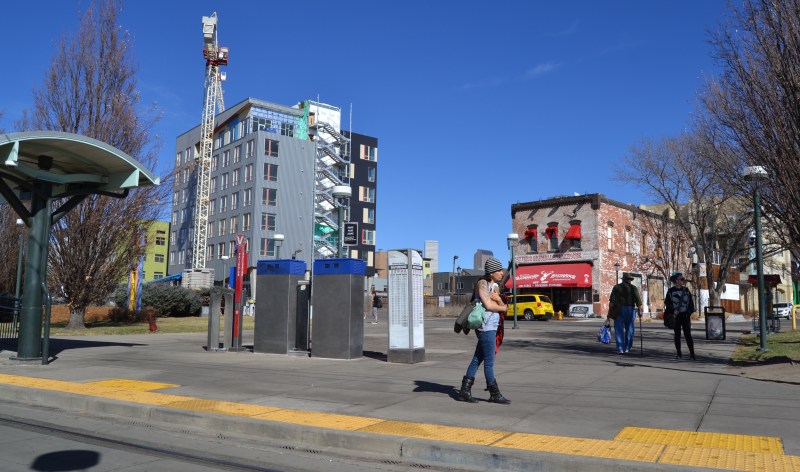Embracing Density and Transit Could Save Denver Households Thousands of Dollars a Year

Denver is changing, and change is never easy. It’s understandable that the pressures of a growing city — where car ownership makes less sense and transit, walking, and biking start to take precedence on the streets — make some people uncomfortable.
But change is also inevitable, and if Denver doesn’t manage its growth well, the costs will be high. In fact, if the city chooses to restrict growth, by 2040 each additional household will pay $3,600 more per year for transportation, energy, and water than if the city embraces dense development and transit, according to a new report assembled for the Blueprint Denver task force [PDF].
What’s more, each additional resident will cause significantly more traffic, use more water, and cause more greenhouse gas emissions in a low-growth scenario than in a high-growth scenario.
The report models the effects of five different “growth strategies” over the next two decades, ranging from Boulder-esque development restrictions to “multi-pronged” development around transit and walkable, mixed-use neighborhoods.
Under the growth restriction scenario, the city’s population would expand by about 135,000 people by 2040, while the most pro-growth scenario would add 262,000 people.
Restricting growth will end up costing Denverites in the long run because suburban development patterns of rambling single-family homes are expensive. According to the report, household costs related to transportation, energy, and water use averaged $11,700 per year in suburban Denver neighborhoods in 2015, nearly three times the average cost of $4,300 in the most urban parts of the city.
The more Denver can transition to walkable, transit-oriented development patterns, the more residents will save, and the less traffic and pollution they will cause. This chart illustrates the differences (VMT stands for “vehicle miles traveled”):

Here’s how each scenario would affect annual vehicle and utility costs per new household:

This report is telling us that Denver’s approach to growth will spell the difference between turning into an expensive, polluting city, or becoming an affordable, sustainable city.
So when the City Council prioritizes parking over housing, or when newspaper editors become irate over modern street designs that prioritize transit and biking over driving, remember that Denver has to play the long game.


